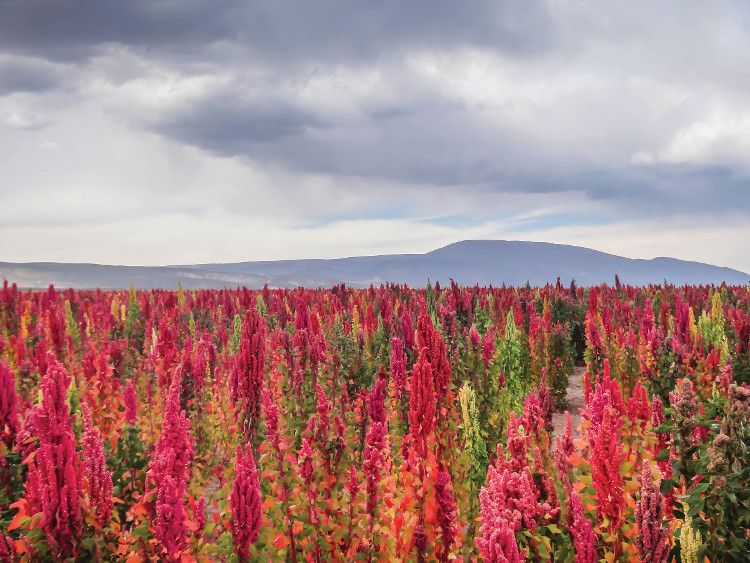The Annex by Ardent Mills introduces Colorado-grown quinoa at IFT 2019
This U.S. quinoa supply offers sensory attributes comparable to quinoa sourced from South America and provides important sustainability benefits to local growers.
Photo © AdobeStock.com/Bjoern

Quinoa, despite its popularity in the United States, is currently sourced largely from South America. But the tide could be turning. At the Institute of Food Technologists’ (IFT) Annual Meeting and Food Expo in June, grains giant Ardent Mills-and, specifically, its specialty ingredients division The Annex by Ardent Mills-discussed how it is helping to introduce a brand new domestic supply of quinoa coming out of Colorado.
The Annex has forged a partnership with the group Colorado Quinoa LLC to clean, mill, and market quinoa grown by farmers in Colorado’s San Luis Valley. The Annex will market this Colorado Quinoa as part of the company’s Great Plains Quinoa portfolio, which also includes quinoa grown in South America and Canada.
A domestic quinoa supply offers benefits to both U.S. food companies and U.S. farmers. For food companies, a domestic source helps strengthen a stable supply chain of this popular ingredient.
Meanwhile, the famers in Colorado’s San Luis Valley see some important benefits. One of the biggest benefits is that quinoa, which also promotes soil biodiversity, requires very little water to produce compared to other grains. Because of this, Colorado Quinoa growers may actually see an economic benefit by growing the crop.
At the IFT show, Don Trouba, senior director, Go-To-Market, for The Annex, explained: “We’re extremely bullish about Colorado Quinoa because farmers like it." In Colorado's San Luis Valley, water shortages present challenges to farmers. Colorado Quinoa, he said, can help farmers. Because farmers can see 366 million gallons' worth of water savings for every 1000 acres of Colorado Quinoa that they grow, those farmers, who are already limited by the amount of water they are allowed to use, can actually get a net credit back to the area's Rio Grande Aquifer System by planting this quinoa.
He continued: “It’s stories like that that I think are one of the reasons why quinoa is growing in popularity and in particular in Colorado. It’s got a great water story.”
One of the reasons why most quinoa supply comes from South America is because South America provides ideal growing conditions. However, said Trouba, “years of non-genetically modified plant breeding, or just conventional plant breeding, has been in place to get to the point where we do have a commercially viable quinoa variety that can grow in this climate” in the U.S.
Colorado Quinoa offers quality attributes comparable to South American quinoa, said Mike Veal, vice president of marketing for Ardent Mills. “This is the first time such a quality and scale has been developed in the U.S.,” he said. “It’s the closest to South American quality as far as the whiteness and the size of the seed and the flavor.”
He continued: “The texture is fantastic. It’s got a nice little pop to it-nice and firm, not mushy. Nice clean flavor. One of the big concerns with quinoa is the saponin and the bitter taste you can get with certain varieties, but this has a nice, clean flavor. And a great color.” Plus, he said, with growth now domestic, there is a lot of local branding that companies can do, as well as a traceability story that consumers value.
“For commercial customers looking for a sustainable and domestic source, Colorado Quinoa offers comparable taste, color, size, and cook volume to varieties of South American white quinoa, with the added benefits of a stable supply chain, competitive prices, and scalability,” the company said in a press release.
The Annex points out that Colorado Quinoa can also be used as a supplement to imported white quinoa, in combination with what is coming from South America. “I think there’s a need to continue to support what’s going on in South America for the farmers there, but also support U.S. farmers who want to diversify and try different things,” Trouba said.
Read more Nutritional Outlook coverage about The Annex here.